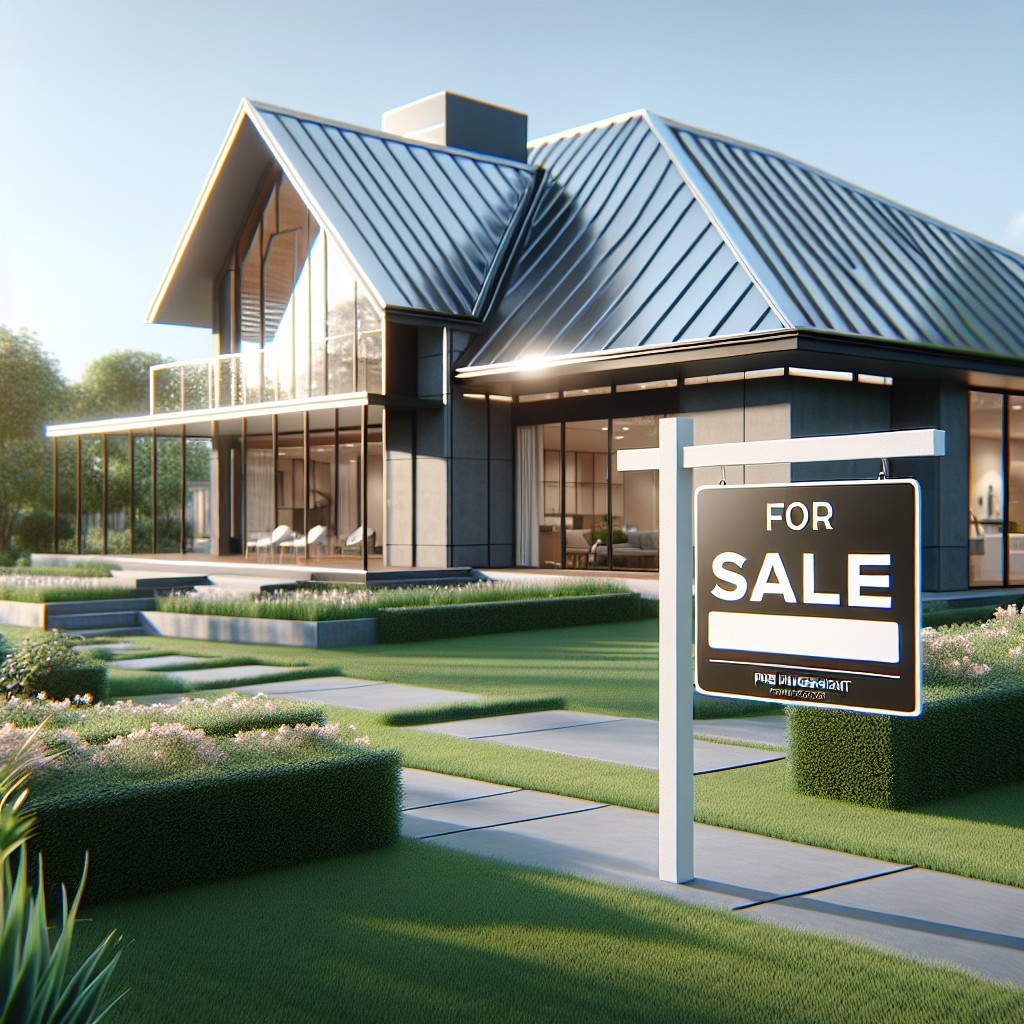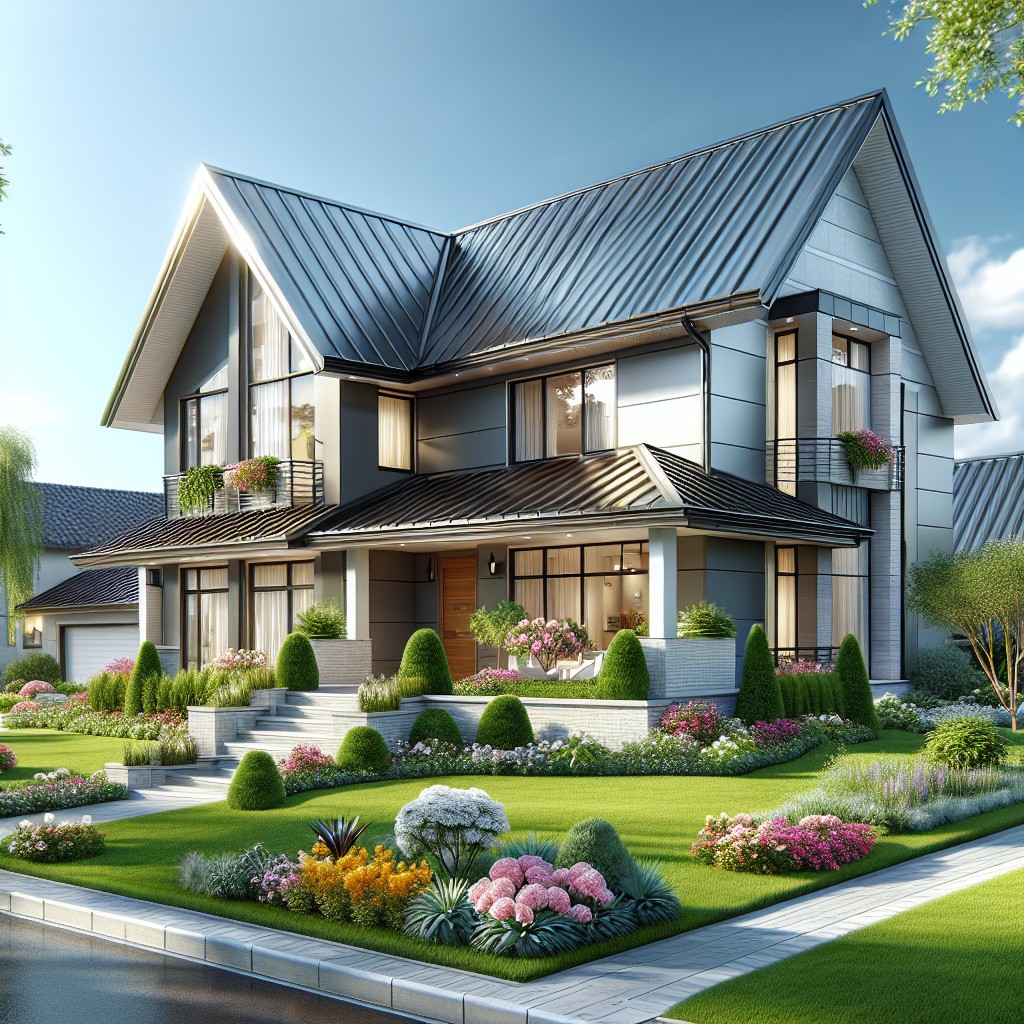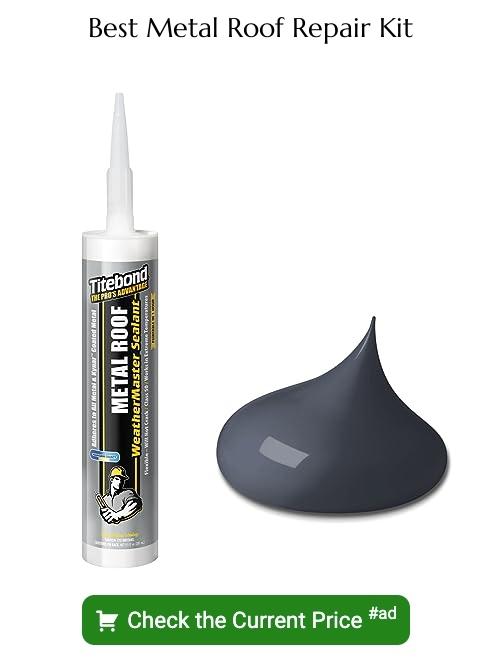Last updated on
Yes, a metal roof can increase home value due to its durability, energy efficiency, and attractive appearance.
Key takeaways:
- Metal roofs increase home value due to durability and attractiveness.
- Energy savings and lower insurance rates make metal roofs appealing.
- Metal roofs last longer and require less maintenance than traditional materials.
- Potential drawbacks of metal roofs include higher upfront costs and noise.
- Metal roofing’s popularity is growing due to sustainability and energy efficiency.
Assessing the Impact of Metal Roofing On Resale Value

Metal roofing can be a significant factor in your home’s resale value, influencing potential buyers’ decisions. Here are a few key points to consider:
- Longevity: Metal roofs can last up to 50 years or more, which is appealing to buyers who want a home with minimal roof maintenance costs.
- Aesthetics: Modern metal roofs come in various styles and colors, potentially enhancing curb appeal.
- Energy Savings: The reflective properties of metal roofs reduce cooling costs in summer, a selling point for energy-conscious buyers.
- ROI: Homeowners often recoup a substantial portion of the metal roof’s cost due to increased home value.
- Insurance Advantages: In some areas prone to severe weather, having a metal roof can lead to lower homeowner insurance rates, which is attractive to future buyers.
It is essential to recognize local market trends, as the value added by a metal roof can vary by region.
Cost-Benefit Analysis: Initial Installation Vs. Long-Term Value

When considering a metal roof, homeowners often face higher upfront costs compared to traditional materials. However, the long-term financial benefits can offset this initial investment. Metal roofs typically last 40-70 years, which is two to three times longer than asphalt shingles. This durability means fewer replacements over the life of the roof.
In addition to longevity, metal roofs may enhance energy efficiency, reflecting solar radiant heat and potentially reducing cooling costs by 10-25%. Lower utility bills contribute to ongoing savings.
Moreover, while the increase in home value varies, studies show that homeowners can recoup around 60-90% of their metal roofing costs through increased home value, although this figure can fluctuate based on local market trends and the quality of installation.
Decomposing these factors showcases a pattern: the higher initial expense pays dividends in durability, energy savings, and potential increase in property value over time.
Energy Efficiency: How Metal Roofs Cut Costs
Metal roofs provide superior energy efficiency, which translates into significant cost savings for homeowners. Here’s how:
1. Reflective Properties: The surface of a metal roof reflects solar radiation, which in turn minimizes heat absorption. This helps maintain cooler indoor temperatures during hot weather, reducing the need for air conditioning.
2. Cool-Metal Roofing: Certain metal roofs are treated with special pigments that enhance their reflective capabilities, further increasing their energy-saving potential.
3. Insulation Enhancement: Metal roofs can be installed with an insulating airspace, improving thermal efficiency and providing better insulation in both warm and cold climates.
4. Long-Term Performance: Over time, the efficiency of metal roofing materials does not diminish, ensuring consistent energy savings throughout the roof’s lifespan.
By decreasing the demand for indoor climate control, metal roofs contribute to a more energy-efficient home and can noticeably reduce utility bills.
Durability and Maintenance of Metal Roofs
Metal roofing stands out for its longevity, with lifespans extending upwards of 40 to 70 years, compared to the 15 to 20 years expected from traditional asphalt shingles. This resilience means a metal roof is a once-in-a-generation investment, greatly reducing the frequency of replacement.
Its sturdy construction withstands harsh weather conditions, including heavy snow, hail, and wind, making it less likely to require costly repairs. Additionally, metal’s nonporous surface resists mold, mildew, and termites, issues often plaguing other roofing materials.
Maintenance for metal roofs is minimal. Routine checks and occasional clearing of debris from gutters and the roof surface are typically sufficient to maintain their condition. The ease of upkeep not only saves time but also further slashes long-term maintenance costs, a factor that potential home buyers find attractive.
The inherent durability and low maintenance of metal roofs contribute positively to a home’s valuation, as they promise enduring quality and reduced future expense for homeowners.
Metal Roofing and Insurance Premium Reduction
Many insurance companies recognize the superior durability and fire resistance of metal roofs, which can translate into lower homeowners insurance premiums. Since metal roofing materials are noncombustible, they are less susceptible to fire damage, a significant factor for insurers when assessing risk. Furthermore, metal roofs often stand up better against severe weather conditions such as hail, high winds, and heavy snow, which can lead to fewer insurance claims related to weather damage.
Specifically:
- Fire Resistance: The noncombustible nature of metal roofing merits a class “A” fire rating, potentially lowering insurance costs due to a reduced fire risk.
- Weather Durability: Metal roofs’ ability to resist severe weather can diminish the likelihood of claims due to storms, sometimes leading to premium discounts.
- Longevity: The extended lifespan of metal roofs, often 40-70 years, could result in insurers viewing the home as a lower risk investment over time.
- Impact Resistance: Some metal roofing systems are rated for impact resistance, again reducing the potential for damage claims.
Homeowners should consult their insurance provider to understand possible savings and ensure they receive any deserved discounts for their metal roof investment.
Market Trends and Buyer Perception of Metal Roofs
Metal roofs have surged in popularity due to their modern aesthetic and long-term benefits, which have not gone unnoticed by homebuyers. In areas prone to extreme weather, buyers often prioritize the durability of roofing materials. As such, homes with metal roofs can stand out in the market, presenting an attractive option for those looking to avoid the maintenance and replacement issues associated with traditional shingles.
The evolving buyer priorities also reflect an increased environmental awareness. Metal roofing is often comprised of recycled materials and is itself fully recyclable, aligning with the values of eco-conscious consumers. Additionally, the cool-roof technology appeal, which contributes to energy savings by reflecting sunlight and reducing heat absorption, adds to their allure.
Real estate agents report that homes with metal roofs often generate more interest, potentially leading to quicker sales. The shift in buyer perception, favoring longevity and sustainability, aligns with the current housing trends, indicating that homes with these roofs may command a competitive edge in the market.
Property Valuation: How Appraisers View Metal Roofs
When appraisers evaluate a home, several key factors shape their assessment of the property’s value. In the context of roofing, metal systems are often regarded favorably due to their longevity and performance. Here are essential points to understand about how appraisers view metal roofs:
1. Life Expectancy: Metal roofs can last upwards of 40 to 70 years, substantially longer than traditional asphalt shingle roofs, thus reflecting positively on the home’s long-term value.
2. Maintenance Costs: With a metal roof’s diminished need for maintenance or replacement, appraisers often consider these savings when determining property value.
3. Energy Efficiency: Metal roofs reflect radiant heat, which can contribute to lower cooling costs. Through these energy savings, appraisers may recognize increased home value.
4. Architectural Appeal: Contemporary metal roofing designs add aesthetic appeal and can enhance curb appeal, which can be a significant factor in an appraiser’s assessment.
5. Insurance Advantages: Due to their resistance to fire, wind, and hail, homes with metal roofs may qualify for reduced insurance premiums, potentially increasing their assessed value.
6. Warranties: Many metal roofs come with substantial manufacturer warranties, providing further assurance of their long-term value, which can be a positive signal to appraisers.
It’s crucial to note that while metal roofs are generally viewed positively, the impact on home valuation can vary based on the local market and buyer preferences.
Potential Drawbacks: Common Concerns With Metal Roofs
While metal roofs are a strong investment for many homeowners, it’s important to weigh some common concerns. Firstly, the upfront cost is generally higher than traditional materials, which may stretch budgets. Secondly, noise can be an issue during heavy rain or hail, although proper insulation can mitigate this. Additionally, if a metal roof is improperly installed or damaged, it can be prone to leaks. Homeowners should also consider that metal roofs have a distinct aesthetic that may not blend with certain neighborhood styles or personal preferences. Finally, not all contractors are experienced with metal roofing installation, so finding the right professional is crucial. Addressing these potential drawbacks early can lead to more informed decisions and lasting satisfaction with your roofing choice.
Case Studies: Real-life Examples of Increased Home Value
Recent home sales serve as compelling evidence of the value metal roofs add. For instance, a study by the Metal Roofing Alliance found homes with metal roofs saw an up to 6% increase in resale value compared to asphalt. In another example, a Florida-based real estate market analysis indicated homes with metal roofs commanded higher asking prices, reflecting buyers’ preference for longevity and energy efficiency. In regions prone to severe weather, such as Texas, homeowners who invested in metal roofing reported quicker sales due to the material’s resilience. These concrete instances underscore the strength of metal as a lucrative roofing investment for homeowners.
Future Roofing Trends: Metal Roofing’s Growing Popularity
The inclination towards sustainability and eco-friendly materials is driving the evolution of the roofing industry. Homeowners and builders are actively seeking long-lasting, recyclable options with minimal environmental impact. Metal roofs, often composed of recycled materials and fully recyclable at the end of their lifespan, fit this bill perfectly.
Advances in technology have also allowed for a broader range of styles and colors, making metal roofs more versatile and aesthetically pleasing than ever before. This adaptability encourages their use in various architectural styles, from traditional homes to modern structures.
The integration of solar-panel technology with metal roofing is an emerging trend, enabling homes to become more energy-independent while capitalizing on the durability of metal. This synergy appeals to environmentally conscious consumers looking to reduce their carbon footprint and benefit from potential tax credits and energy savings.
Insurance companies are starting to recognize the superior resilience of metal roofs to fire, hail, and wind. Consequently, they are increasingly offering reduced premiums to homeowners with metal roofing, making this option more attractive from a financial perspective.
As consumer awareness about the benefits of metal roofing spreads, demand is expected to rise. This shift may prompt roofing contractors to specialize in metal roof installation, leading to increased expertise and potentially lower costs due to competition and efficiency in installation practices.
These factors collectively signal a bright future for metal roofing, indicating that its popularity will only continue to grow as its many advantages become more widely recognized and appreciated in residential construction.
FAQ
Do metal roofs have higher resale value?
Yes, metal roofs typically enhance a home’s resale value by up to 6% compared to homes with asphalt-shingle roofs.
Are metal roofs a good investment?
Yes, metal roofs are a good investment due to their impressive durability and long lifespan which can range from 30 to 50 years depending on the circumstances.
What adds more value to a house metal roof or shingles?
Metal roofs, specifically those renovated with standing seam metal roofing, add more value to a house than asphalt shingles, as they result in an 85% to 95% recoupment of costs and a 1%-6% increase in resale value.
How does a metal roof impact energy efficiency and home worth?
A metal roof significantly enhances energy efficiency by reflecting solar radiant heat, which can reduce cooling costs by 10-25%, while also potentially increasing the home’s worth due to its durability, longevity, and low maintenance needs.
Can the longevity of a metal roof contribute towards an improved property value?
Yes, the longevity of a metal roof can contribute towards an improved property value.
How does the aesthetic appeal of metal roofing influence potential buyers’ perceptions and the overall home value?
The aesthetic appeal of metal roofing can greatly influence potential buyers’ perceptions by enhancing a home’s curb appeal and potentially increasing the overall home value due to its modern, sleek appearance.
Related
- Does a New Roof Increase Home Value: Understanding Your Home Improvement ROI
- How Much Does a New Roof Increase Home Value: The Hidden Benefits for Homeowners
- Fortified Roof: An Informative Guide to Enhance Your Home’s Durability
- Metal Roof Cost in Florida: Essential Guide on Pricing & Factors
- Metal Roof Tax Credit: Comprehensive Guide to Maximizing Benefits

